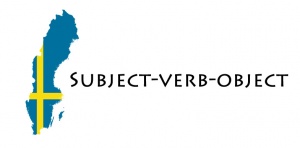Difference between revisions of "Language/Swedish/Grammar/Sentense-Structure"
| Line 44: | Line 44: | ||
|keywords=grammar, sweden, words, verbs, position, grammatical, functions | |keywords=grammar, sweden, words, verbs, position, grammatical, functions | ||
|description=In this lesson you will learn how to organize a sentense in Swedish. | |description=In this lesson you will learn how to organize a sentense in Swedish. | ||
|og:image=http:// | |og:image=http://polyglotclub.com/wiki/images/6/61/Subject-verb-object-Sentense-structure-Swedish.jpg | ||
}} | }} | ||
[[Category: Swedish/Beginner]] | [[Category: Swedish/Beginner]] | ||
Revision as of 21:33, 31 October 2016
Subject-verb-object
Each language has a particular sentence structure and they are all built up by grammatical functions:
- Subject --> the person/animal/thing doing something
- Verb --> what the person/animal/thing is doing
- Object --> who/what is being affected by what the subject is doing
In Swedish, the sentence structure is built with SUBJECT-VERB-OBJECT. We call it "simple word order."
Example:
Jag läser en bok (I read a book)
To know the subject, ask yourself: Who is reading? --> "Jag", so "jag" is the subject.
To know the verb, ask yourself: What is "jag" doing? --> "Läser", so "läser" is the verb.
To know the object, ask yourself: What is being read? --> "En bok", so "en bok" is the object.
Swedish also has something called "reversed word order" which means that if something else than the subject comes first in a sentence, we have to move the verb to the second position.
Example:
Jag läser en bok
(S) (V) (O)
I dag läser jag en bok (Today I read a book)
(V) (S) (O)
Do you see that "läser" and "jag" have switched places? A good tip is to think that the verb ALWAYS should be in the second position in a sentence.
Authors
